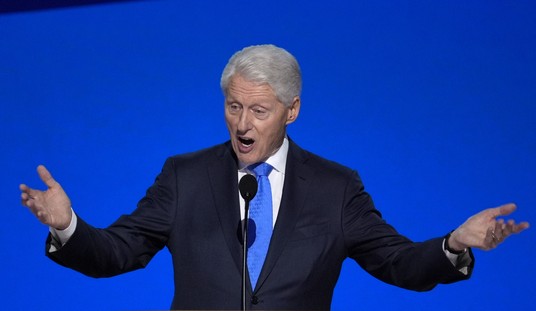I won’t assume Tim Geithner and Robert Reich coordinated their pieces yesterday, but both are of a piece with the latest meme on economic policy from the Administration’s supporters. This goes either “it could have been worse” or “you don’t know how bad it would have been.” Twittered to me by “ParisParamus” last night, here’s Reich:
Consider the stimulus package. Although it’s difficult to separate the consequences of fiscal and monetary policy, most knowledgeable observers conclude that the stimulus has had a positive effect. Real GDP is now increasing at an annual rate of 2.4%, and although the recovery is still fragile it’s unlikely we’ll fall back into a full-fledged recession.
“Difficult to separate”?? The reason it’s difficult is that you need a model of how the economy works to do that. Blinder and Zandi tried that last week. If you have a different model, you get a very different answer. John Taylor, at least, does not agree with how that study was done. We simply don’t know if it had a positive effect. I make the probability of “zero or negative” effect less than 50%, but the range of my estimates is very broad, imprecise, uncertain. I think I qualify as a “knowledgeable observer” when I say “I don’t know that the stimulus has had a positive effect.”
Reich again:
In fairness, no one knew how sick the economy was in February 2009 when Congress approved the initial stimulus. Yet by late spring 2009 the White House knew the extent of the damage and should have pushed much harder for significantly more spending. Almost a third of the initial stimulus, moreover, came in the form of temporary tax cuts, which already had been proven relatively ineffective at spurring demand after President Bush tried them in 2008. And many states were engaging in reverse stimulus policies, slashing spending and increasing taxes. The administration knew its stimulus was not nearly up to the job.
Anyone reading my Twitter feed Monday night should know this is the paragraph where I popped a gasket. Where to begin?
- There was at the time and remains to this day a great deal of uncertainty about “how sick the economy was in February 2009.” The Administration said repeatedly in February 2009 that they were comfortable with the size of the stimulus package; Brad DeLong was saying in June they thought the stimulus should have been 2.5 times the size it was. But the Administration had bought their own estimate of potential GDP and the size of the gap they had to close. (See also this from Michael Kiley.)
- On July 12, 2009, Geithner was quoted on CNN saying “I think all economists believe, and this was inherent in the design of the program, that the biggest thrust or force would start to take effect in the second half of this year. And we’re going to start to see that happen. But I don’t think that’s a judgment we need to make now, can’t really make it now prudently, responsibly.” It did not know “its stimulus was not nearly up to the job.” It thought in summer that indeed it WAS up to the job.
- There is no one model, or even one measure of potential GDP. Truth is, we’re all over the place. At no point does Reich show any understanding of that which he asserts so glibly. I am utterly astounded by how thoughtlessly he asserts these things.
- As to those ineffective tax cuts, The Administration’s CEA reported that they estimate those silly tax cuts contributed 1.7% of GDP gap closing and 1.4 million jobs “saved or created.” Even Romer’s own academic paper shows an effect of tax changes on GDP. (Relatedly, I have yet to watch Robert Barro’s AEI speech, but the slides look worth reading.)
Geithner, meanwhile, plays this little trick:
The new data show that this recession was even deeper than previously estimated. The plunge in economic activity started an entire year before President Obama took office and was accelerating at the end of 2008, when G.D.P. fell at an annual rate of roughly 7 percent.
There was none of this concern about re-estimated GDP in 2009 when setting the size of the stimulus. We knew the start of the recession was December 2007 on December 1, 2008, six weeks before the Romer-Bernstein memo. The GDP figure at end of 2008 was $75 billion less than had been estimated. Given your administration’s estimate of a multiplier of 1.56, that implies your stimulus package was short by about $48 billion. Most of the downward revision was in 2009, meaning your policies were even less effective than previously thought.
Panicked by the collapse in demand and financing and fearing a prolonged slump, the private sector cut payrolls and investment savagely. The rate of job loss worsened with time: by early last year, 750,000 jobs vanished every month. The economic collapse drove tax revenue down, pushing the annual deficit up to $1.3 trillion by last January.
So the passage of stimulus in February 2009 did not stop the panic. Glad to have that on record. As to the # jobs vanishing, this 750,000 is a measure of the peak, true for two months (ok, we’ll give you three, though February 2009 was actually 726,000. Close enough for government work.) As to “the economic collapse drove tax revenues down”, the state of the economy is removed from the cyclically adjusted budget deficit by CBO, and that was 7.5% in 2009, 6.5% in 2010. Their estimate shows that even if we were at full employment, the budget deficit would still be $1,018 billion.
Do they even bother to read their own government reports?
This post was promoted from GreenRoom to HotAir.com.
To see the comments on the original post, look here.







Join the conversation as a VIP Member